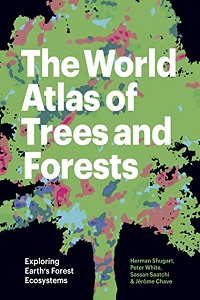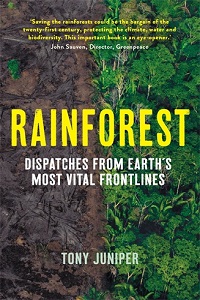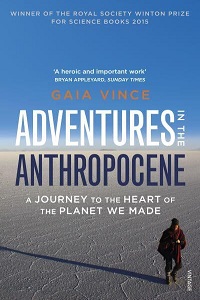How will these resources help you?
The value of the world’s forests in tackling climate change is clear and well-known. However, the astonishing rate at which we are losing them forces us to ask how we can preserve these vital forms of climate mitigation, complex ecosystems and homes to indigenous peoples. These resources offer optimistic insights into forest preservation in a range of ways, including the lifestyle adaptations and empowerment of indigenous communities and the lobbying of national governments and multinational companies. They all share a positive view of the future of forests – if action is taken now. GCSE students will benefit from these resources in their studies of The Living World and Sustainable Forest Management, and teachers can present extracts to KS3 students in addressing many areas of the curriculum. With climate anxiety weighing heavily on their minds, it is important that students see the optimism that these resources provide.
Mapping the forests

The World Atlas of Trees and Forests: Exploring Earth's Forest Ecosystems
by Herman Shugart, Peter White, Sassan Saatchi and Jérôme Chave, published by Princeton University Press, (2022), 9780691226743
This impressive book goes beyond its fantastic photographs and illustrations to explore how forests work and grow and, more importantly for this topic, how we map, assess, and conserve them. The book draws upon cutting-edge research, technology and satellite imagery. The photography is ideal for inspiring students to want to protect this fragile ecosystem. The book explores forest types, forest change, climate change and the future of forests - a very accessible and authoritative introduction to forests and how we can preserve them.
Protecting the forests

Ever Green: Saving Big Forests to Save the Planet
by John W. Reid and Thomas E. Lovejoy, published by W. W. Norton & Company, (2022), 9781324006039
This book explores the five remaining ‘megaforests’ on earth: the Taiga, extending from the Pacific Ocean across all of Russia and far-northern Europe; the North American boreal, the Amazon and the Congo Rainforests, and the island forest of New Guinea. In this refreshingly optimistic and action-oriented work, the authors explain how they have been managed and mismanaged historically. More importantly, Reid and Lovejoy offer practical solutions to address the biggest challenges these forests face. The book highlights the work of indigenous people. In this case, many of the best, most hopeful examples of successful efforts to both protect the environment and sustain communities come from efforts led by those that know and depend on the forest most. Extracts are ideal for use in the classroom and extra reading for GCSE students as part of their Living World unit studies or climate change mitigation studies.
The front line

Rainforests: Dispatches from Earth’s Most Vital Frontlines
by Tony Juniper, published by Profile Books, (2022), 9781781256374
Following an excellent account of rainforest value and interdependence, Section 2 addresses the issue of preservation. Chapter 8 (‘Protest and Survive’) highlights the rising concern over rainforest destruction. Chapter 9 suggests that rainforest destruction is not the inevitable consequence of economic development students see in the Amazon and Malaysia in GCSE textbooks. Costa Rica is an example of how development and preservation can coexist. Chapter 10 reinforces the messages from Ever Green, in that the ‘Best Forest Custodians’ are the indigenous people, and their empowerment is key. This is an optimistic, action-orientated work with bold ideas. The book concludes that international agreements, company policies, and public awareness can support preservation, although time is short. An accessible read for GCSE and A-Level students, as well as non-specialist teachers.
The human footprint

Adventures in the Anthropocene: A Journey to the Heart of the Planet We Made
by Gaia Vince, published by Random House, (2016), 9780099572497
This book is a must-read for all geography teachers and the perfect starting point when investigating our threatened ecosystems. The narrative is that we are entering a new geological epoch, from the Holocene to the Anthropocene, and that we are doing irreversible damage in this new era. Each chapter starts with great positivity and celebration of the environment concerned but becomes depressing as the damage we are doing becomes apparent. This is followed by the efforts individuals and communities make to stop this, although these are small-scale and, while ingenious, are often low impact. Rosa Maria Ruiz in the Bolivian Amazon is an exception, and Chapter 8 explores her efforts to protect the forest from deforestation and the illegal wildlife trade. Accessible and suited to any GCSE or A-level syllabus as all have Living World units.
Further materials
The future of forests is in our hands, published by FSC (Forest Stewardship Council)
Visit this website
Forest governance by indigenous and tribal peoples: An opportunity for climate action in Latin America and the Caribbean, published by FAO (Food and Agricultural Organisation of the United Nations), (2021), 9789251339701
Access this resource
Can a cooking pot help save the rainforest? by Raïssa Loussouf, published by BBC World Service, (2018)
Watch this video
David Newell is Head of Geography at Millais School in Horsham, West Sussex. He has held the GA’s Secondary Geography Quality Mark since 2015, and has worked as a Specialist Leader in Education, advising schools on improving their Geography provision.
Text © David Newell, 2022.
Text © David Newell, 2022.



